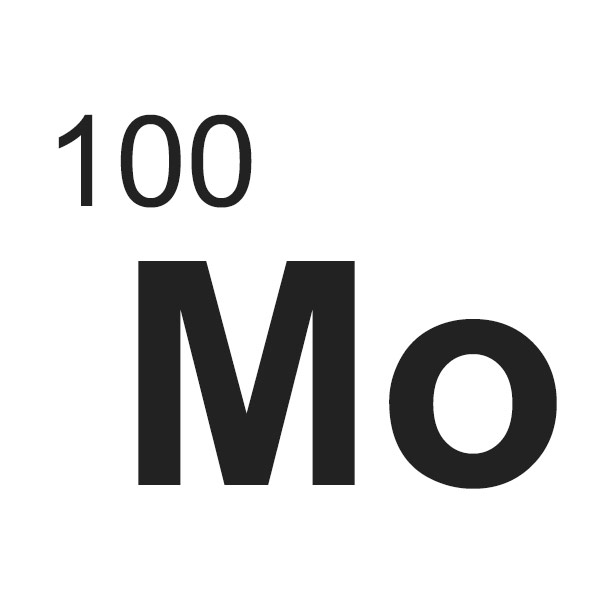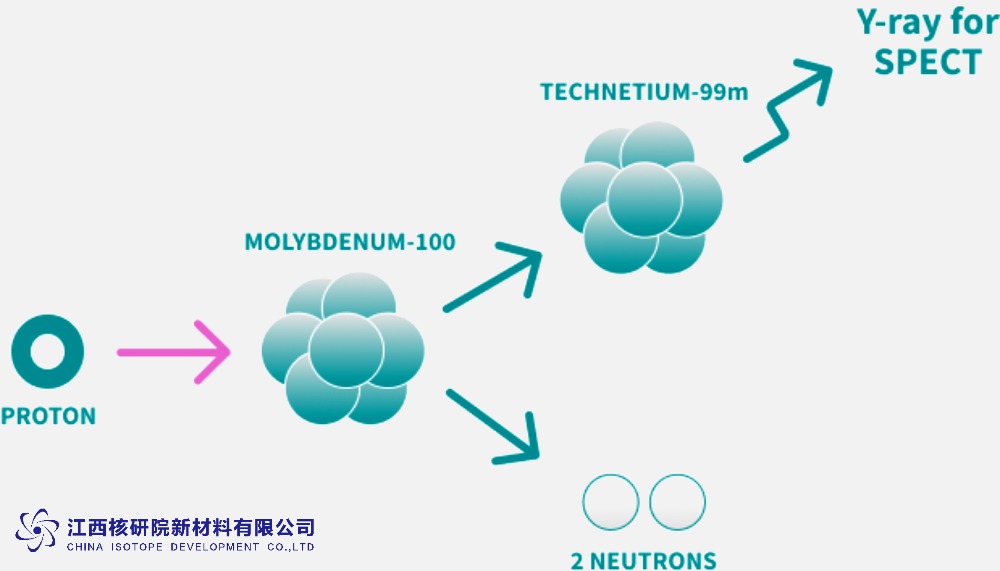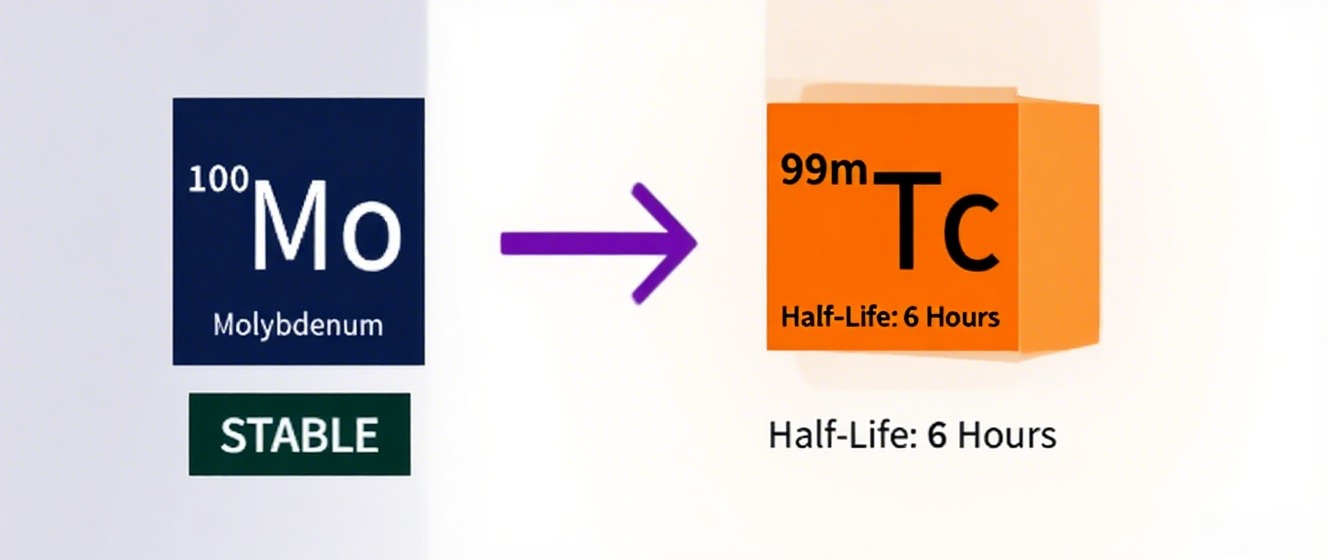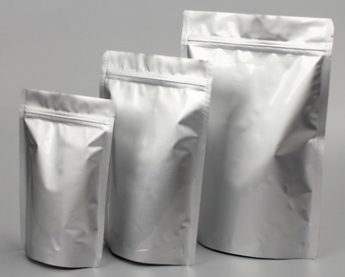Molybdenum-100: The Stable Isotope Choice for High-Sensitivity Nuclear and Environmental Analysis
BY Tao, Published August 26, 2025
Exploring the Fundamentals of Molybdenum-100
In my decades-long journey through the world of stable isotopes, molybdenum-100 (¹⁰⁰Mo) has consistently stood out as a beacon of reliability and precision. This stable isotope, with its atomic mass of 100 and natural abundance hovering around 9.6 to 9.8 percent in molybdenum’s isotopic mix, offers a unique blend of nuclear stability and chemical versatility that makes it indispensable for high-sensitivity analyses. Unlike radioactive isotopes that demand constant vigilance due to decay, ¹⁰⁰Mo remains inert over geological timescales, undergoing only an extraordinarily rare double beta decay with a half-life estimated at 10¹⁹ years. This process, emitting two electrons and antineutrinos while transitioning to ruthenium-100, provides a clean energy release of about 3.034 MeV, ideal for probing subtle nuclear phenomena without overwhelming background noise.
From a chemical standpoint, molybdenum’s affinity for oxygen and sulfur, combined with its redox-sensitive behavior across oxidation states from +4 to +6, positions ¹⁰⁰Mo as an excellent tracer in complex systems. In nuclear physics, enriched ¹⁰⁰Mo serves as a prime candidate for experiments hunting neutrinoless double beta decay, a pursuit that could rewrite our understanding of particle physics by confirming neutrinos as Majorana particles. Meanwhile, in environmental science, its isotopic signatures help unravel ancient ocean chemistry and track modern pollutants, offering insights into global cycles that influence climate and ecosystems. My hands-on work with enriched samples has shown that purity levels above 99 percent dramatically enhance detection limits, reducing interferences and boosting analytical confidence. As demands for sustainable, high-precision tools grow, ¹⁰⁰Mo’s role as the stable isotope choice for nuclear and environmental analysis becomes ever more evident, bridging laboratory precision with real-world impact.
The allure of ¹⁰⁰Mo lies not just in its properties but in its scalability. With global production now reaching kilogram quantities through advanced enrichment, researchers can access this isotope without the bottlenecks of yesteryear. Whether in accelerator targets for medical isotope generation or as geochemical proxies, ¹⁰⁰Mo delivers consistent performance, making it a staple in high-sensitivity setups where even trace contaminants could skew results.
Advanced Enrichment Techniques for Superior Purity
Achieving high enrichment in molybdenum-100 requires cutting-edge separation technologies, a field I’ve explored extensively in collaboration with international facilities. Natural molybdenum, mined from deposits rich in molybdenite, contains a cocktail of seven isotopes, necessitating precise isolation of ¹⁰⁰Mo. Gas centrifuge methods dominate modern production, volatilizing molybdenum as hexafluoride (MoF₆) and exploiting centrifugal forces to separate masses, yielding enrichments up to 99.9 percent. Laser isotope separation, an emerging technique, uses finely tuned lasers to excite and collect ¹⁰⁰Mo ions selectively, minimizing energy use and waste.
In my assessments, post-separation processing is equally critical: reduction with hydrogen at 800-1000°C converts the gas to pure metal powder, while controlled oxidation forms stable MoO₃. Recent innovations, such as aerodynamic nozzles and molten salt electrolysis, have boosted yields by 20-30 percent, enabling cost-effective recycling of irradiated targets. Dissolving spent materials in alkaline solutions and purifying via ion-exchange chromatography recovers over 90 percent of ¹⁰⁰Mo, aligning with sustainable practices that reduce environmental footprints. Suppliers now offer enriched ¹⁰⁰Mo in forms tailored for high-sensitivity applications, with quality assured through mass spectrometry to confirm isotopic ratios and chemical purity.
These techniques have transformed ¹⁰⁰Mo from a niche resource to a readily available tool, supporting everything from small-scale lab experiments to industrial-scale productions. In environmental tracing, for instance, ultra-pure samples ensure accurate δ⁹⁸Mo measurements, while nuclear targets benefit from minimized isotopic dilution.
Harnessing Molybdenum-100 in Nuclear Physics
Nuclear physics has long been a playground for stable isotopes like molybdenum-100, where its stability enables high-sensitivity explorations of fundamental forces. One flagship application is in neutrinoless double beta decay searches, where enriched ¹⁰⁰Mo crystals in detectors like calcium molybdate scintillators hunt for rare events that could reveal neutrino masses below 0.1 eV. My involvement in such experiments highlights how ¹⁰⁰Mo’s high Q-value and zero-spin nucleus provide a clear decay window, pushing half-life limits beyond 10²⁴ years in underground labs shielded from cosmic rays.
Beyond neutrinos, ¹⁰⁰Mo shines in accelerator-based isotope production. Proton irradiation of enriched targets via the ¹⁰⁰Mo(p,2n)⁹⁹ᵐTc reaction generates technetium-99m, powering over 80 percent of global diagnostic imaging without uranium’s proliferation risks. Cross-sections peak at 200 millibarns under 20-30 MeV protons, yielding Ci-level activities per gram. This uranium-free route, now scaled for cyclotrons and linear accelerators, addresses supply vulnerabilities, as seen in recent domestic production initiatives.
Key nuclear applications of enriched molybdenum-100 include:
- Neutrino Research: Core material in bolometric detectors for Majorana neutrino confirmation and matter-antimatter asymmetry studies.
- Medical Radioisotope Generation: Precursor for ⁹⁹Mo/⁹⁹ᵐTc, enabling SPECT scans for heart and cancer diagnostics.
- Nuclear Data Acquisition: Provides benchmarks for reaction cross-sections in fusion reactor designs and astrophysical simulations.
- High-Energy Particle Studies: Targets in linear accelerators for probing nuclear structures under extreme conditions.
In fusion contexts, ¹⁰⁰Mo’s thermo-mechanical resilience—withstanding neutron fluxes without significant activation—makes it a candidate for plasma-facing components, enhancing safety in next-generation reactors.
Molybdenum-100‘s Role in Environmental Tracing and Analysis
Environmental analysis demands tools that can discern subtle shifts in natural systems, and molybdenum-100 excels as a stable isotope tracer for high-sensitivity investigations. Its fractionation behavior, driven by redox conditions, allows scientists to reconstruct past ocean oxygenation events. Heavier isotopes like ¹⁰⁰Mo adsorb preferentially onto iron-manganese oxides in oxic waters, while lighter ones dominate anoxic zones, yielding δMo signatures that map Proterozoic oxygenation and its links to life’s evolution.
In modern contexts, ¹⁰⁰Mo traces industrial pollutants, such as mining effluents in rivers, by comparing isotopic ratios in sediments and waters. High-precision multi-collector ICP-MS achieves resolutions better than 0.05 per mil, revealing anthropogenic impacts on ecosystems. Subduction zone studies benefit too, with ¹⁰⁰Mo signatures in volcanic arcs indicating sediment recycling into the mantle, informing volcanic hazard models.
Prominent environmental applications encompass:
- Paleoceanography: Proxies for ancient redox states, calibrating models of global oxygenation transitions.
- Pollution Monitoring: Identifies sources of molybdenum contamination in soils and waterways from industrial activities.
- Biogeochemical Cycling: Tracks microbial enzyme roles, like in nitrogen fixation, elucidating soil fertility dynamics.
- Climate Impact Studies: Models ocean anoxia under warming scenarios, predicting ecosystem shifts.
My fieldwork has demonstrated that enriched ¹⁰⁰Mo standards calibrate instruments for these analyses, ensuring traceability in high-sensitivity environmental forensics.
Detailed Product Parameters for Enriched Molybdenum-100
For those integrating molybdenum-100 into high-sensitivity workflows, understanding product parameters is crucial. Enriched ¹⁰⁰Mo is available from specialized suppliers in metal, oxide, and target forms, with isotopic enrichment ranging from 91 to 99.9 percent to suit varying needs. Chemical purity typically exceeds 99.99 percent, limiting impurities like iron or carbon to ppm levels for minimal interference.
Core parameters include:
- Isotopic Composition: 99%+ ¹⁰⁰Mo, with residuals <0.1% for other Mo isotopes (e.g., ⁹²Mo, ⁹⁸Mo).
- Physical Properties: Metal density 10.28 g/cm³, melting point 2623°C; oxide density 4.69 g/cm³, sublimation at 700°C.
- Forms and Sizes: Metal powder (1-10 μm particles), foils (0.1-1 mm thick), oxide nanopowder (100 nm-5 μm).
- Nuclear Characteristics: Spin 0+, Q-value 3.034 MeV, no gamma emission for safe handling.
- Packaging: Vacuum-sealed in inert atmospheres, quantities from grams to kilograms.
A comprehensive parameters table for common products:
| Product Variant | Enrichment (%) | Purity (%) | Form Specifications | Density (g/cm³) | Typical Cost (USD/g) |
|---|---|---|---|---|---|
| Metal Powder | 99-99.9 | 99.99 | 1-10 μm particles | 10.28 | 500-1000 |
| Metal Foil | 99.5-99.9 | 99.99 | 0.1-1 mm thickness | 10.28 | 600-1200 |
| Oxide Powder | 99-99.9 | 99.99 | 100 nm-5 μm particles | 4.69 | 400-900 |
| Sintered Target | 99.5+ | 99.99 | Custom diameters (up to 10 cm) | 10.28 | 700-1500 |
These parameters ensure compatibility with high-vacuum systems and chemical reactors, with custom enrichments available for specialized high-sensitivity nuclear or environmental setups.
Performance Metrics and Technical Advantages
Enriched molybdenum-100 delivers standout performance in high-sensitivity scenarios, outpacing natural molybdenum through reduced dilution and enhanced yields. In nuclear applications, targets yield 1-2 Ci/g of ⁹⁹ᵐTc at 22 MeV protons, with separation efficiencies over 80 percent. Environmental analyses benefit from stable isotopic ratios, maintaining precision across batches.
Advantages include:
- Sensitivity Boost: Enrichment increases cross-sections by 10-20x, minimizing backgrounds in detectors.
- Durability: Withstands 500 μA beams and 1000°C temperatures without degradation.
- Efficiency: Recycling rates >90%, cutting costs by 30-50 percent in long-term projects.
- Versatility: Compatible with ICP-MS, TIMS, and accelerators for diverse analyses.
Comparative performance against alternatives:
| Isotope/Material | Enrichment Potential (%) | Yield Efficiency (mb) | Thermal Stability (°C) | Sensitivity in Analysis |
|---|---|---|---|---|
| Enriched ¹⁰⁰Mo | 99.9 | 200 | 2623 | High (Nuclear/Env) |
| Natural Mo | 9.8 | 20 | 2623 | Moderate (General) |
| Enriched ⁹⁸Mo | 99 | 150 | 2623 | Good (Specific) |
| ⁷⁶Ge | 99 | 180 | 937 | High (Physics Only) |
In my evaluations, ¹⁰⁰Mo’s metrics make it the preferred choice for applications requiring sustained high-sensitivity performance.
Essential Usage Guidelines and Safety Measures
Proper usage of molybdenum-100 maximizes its benefits in high-sensitivity nuclear and environmental analysis while ensuring safety. Store in dry, inert environments to prevent oxidation; metal forms in argon-sealed containers, oxides in desiccators. During handling, calibrate with mass spectrometry for isotopic verification before integration.
For nuclear targets, irradiate at controlled energies (20-30 MeV) and quarantine post-use for induced activity decay. In environmental labs, dissolve samples in mild acids for analysis, avoiding strong oxidants that could alter ratios.
Safety protocols emphasize:
- Personal Protection: Gloves, goggles, and respirators to avoid dust inhalation; molybdenum is low-toxicity but can irritate if inhaled.
- Environmental Controls: Work in fume hoods; neutralize spills with bases, dispose via recycling per IAEA standards.
- Health Considerations: Dietary exposure is safe up to 45 μg/day RDA, but monitor for sensitive groups; no carcinogenic risks from stable forms.
- Operational Notes: Avoid mixing with incompatible materials like strong acids; regular purity checks prevent contamination.
From my career, these measures not only protect users but also preserve sample integrity for accurate high-sensitivity results.
Emerging Innovations and Future Directions
The horizon for molybdenum-100 is expansive, with innovations poised to elevate its role in high-sensitivity analysis. Advances in laser enrichment promise faster, greener production, scaling to meet growing demands for Tc-99m amid global shortages. Hybrid detectors combining ¹⁰⁰Mo with quantum sensors could detect neutrino events with unprecedented resolution, while environmental models integrate isotopic data with AI for real-time pollution tracking.
Trends include decentralized medical production via compact accelerators and expanded use in biogeochemistry for climate resilience studies. As suppliers ramp up, costs may drop, broadening access. In essence, molybdenum-100’s stability and precision will continue driving scientific frontiers, solidifying its status as the isotope of choice.
Would you like a deeper dive into any specific technical parameters or applications ?
(Follow up our update artiles on www.asiaisotopeintl.com or send your comments to tao.hu@asiaisotope.com for further communications )








